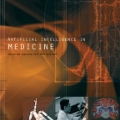In randomized controlled trials (RCTs) that focus on time-to-event outcomes, intercurrent events can arise in two ways: as semi-competing events, which modify the hazard of the primary outcome events, or as competing events, which make the definition of the primary outcome events unclear. Although five strategies have been proposed in the ICH E9 (R1) addendum to address intercurrent events in RCTs, these strategies are not easily applicable to time-to-event outcomes when aiming for causal interpretations. In this study, we show how to define, estimate, and make inferences concerning objectives that have causal interpretations within these contexts. Specifically, we derive the mathematical formulations of the causal estimands corresponding to the five strategies and clarify the data structure needed to identify these causal estimands. Furthermore, we introduce nonparametric methods for estimating and making inferences about these causal estimands, including the asymptotic variance of estimators and hypothesis tests. Finally, we illustrate our methods using data from the LEADER Trial, which aims to investigate the effect of liraglutide on cardiovascular outcomes.
翻译:暂无翻译



